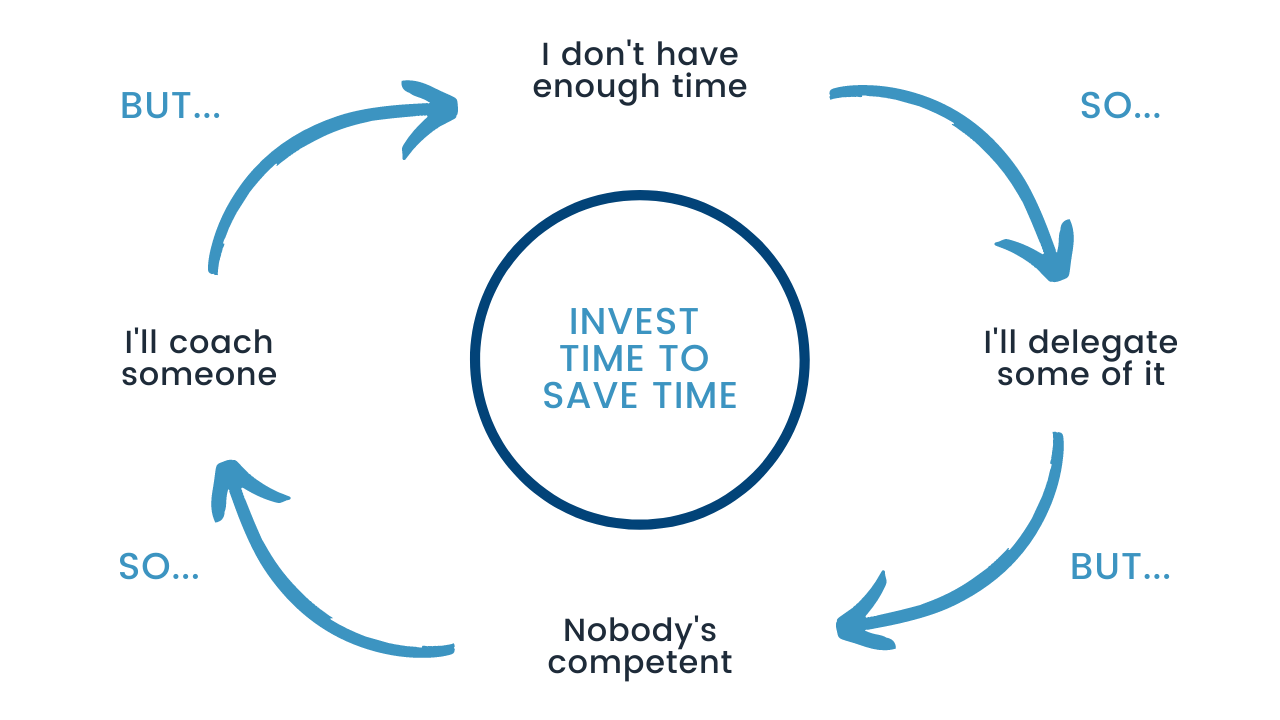The practice of active delegation is an essential part of effective management. If you want to compound the impact you have on your team and organization, you will need to learn to effectively delegate duties, responsibilities, and projects that are not essential that you be involved in.
Having said that, truly great leaders utilize a commonly overlooked aspect of delegation that few managers fully employ. We refer to it as “engaged delegation” and we will unpack the meaning of this methodology and what it is all about in this article.
“You do not build a business, you build people and they build the business.” —Sir Richard Branson
Moving from “conventional” to “engaged” delegation
We all know what delegation is, and that to do it well, you need to maintain goals and objectives within the act itself. In its truest form, delegation of duties involves handing off a project or a body of work to a trusted employee and allowing the employee to complete the needed steps, which includes granting them sufficient authority and responsibility to accomplish each level of the project.
These are all strong aspects of the act of delegation. What we are suggesting, however, is that there is another layer of delegation, unseen by most, that only progressive leaders act on and that pay dividends far down the road for both the employee and the organization-at-large.
Engaged delegation: teaching, coaching, and mentoring while delegating
Engaged delegation is a term that we have used for some time. The expression is designed to reflect a larger purpose, beyond the completion of work, when delegating to team members. To be sure, “engaged” delegation involves all the many aspects of delegation that we know it to be, however, we also add the objectives of leadership development, rich employee engagement, and teaching to the delegation model.
So, how do we create a learning environment while not creating unneeded work for managers, but still rich teaching opportunities for employees? The key is to consistently implement engaged delegation so that the authentic delegation of tasks is available, but that engaged learning is embedded or fully baked into the practice itself.
Here are four helpful steps to take, which are each simple and not too time-consuming for managers. Each of these steps is designed to not only delegate the project as desired, but to also to cultivate and enrich the employee learning experience along the way.
1. Define project outline and model performance
Even though the project may end up defining itself, as many do, spend some time identifying the learning opportunities within the project itself. If your employee lacks the necessary experience for the project (or company processes, etc.), then model how to begin the project prior to its final handoff. This may require you to manage a small part of the project yourself in order to partner with the employee who is learning. That is, you perform the task the first time while your employee observes, for s/he to reproduce the desired outcome in the future.
2. Coach next-level thinking
Do not fully define every single step within the project itself. If you are coaching team building, organization, and strategic thinking, allow the employee to co-create the process or manner in which the project is completed. If the employee simply follows a recipe or formula, you may learn about their ability to follow directions, but nothing will be learned regarding their aptitude for strategic thinking and boundary-free problem solving.
3. Community effort identification and coaching
One of the most essential aspects of skilled project management is being able to utilize partners –who are often scattered throughout the organization — for assistance. Great project managers can tap others for help, take feedback from colleagues, and can speed up or slow down the project when relying on others to complete certain phases of the project. Teaching this can be challenging. New project managers often desire to “prove themselves” and a considerable amount of coaching is required to teach that most projects are completed with a community effort.
4. Dialog and reframing are essential
Once you and your mentee have agreed to the rough outline, purpose, and various aspects to the project, have the employee fully describe the project to you in his or her own words. When someone is asked to describe, out loud, something, often details that the mind surfs over in thought, are caught when a verbal explanation does not present itself clearly and naturally. This forces detailed, step-by-step thinking and planning on behalf of the employee and assurance that both parties are on the same page through and through.
Another way for us to exhibit this point is to outline the steps of delegation as many of us know it today, compared, side by side, to how engaged delegation’s added steps can make a real difference. View the chart here.
The no. 1 objection we hear to this thinking
We know that busy managers typically delegate to remove workload from their plate and that taking on a mentoring relationship, as conventionally understood, while doing so defeats the purpose. Further, you may relate to this image from Crowe Associates:
Although we have all experienced the emotion that results from the image above, played out in real life, we have found, as has Gallup, that the opposite ends up being true. That is, mentoring, coaching, teaching (however you wish to refer to this practice) takes up little time and produces, over the long haul, compounding and lasting results that impact the entire organization.
Taking less time than managing the project themselves, managers can, through weekly one-on-ones, guide, correct and coach, thus also delegating, in a more inclusive, engaging way that creates more confident, productive, motivated, and satisfied employees who are glad they work where they do. Over time, this on-going practice cultivates a higher overall job satisfaction, better work culture, higher employee engagement, internally developed leaders for the future, and reduced turnover rates.
Bottom line
In general, the enchantment of delegation is tempting, especially since it is getting needed project work done, while getting work immediately off of your desk. This is why it’s essential to understand that delegation, when properly executed, is a shared experience. Engaged delegation has not one but two objectives. The first being task completion. The second being employee learning, engagement, and growth. It may take more time and investment at the start, but your employee, the company-at-large, and you will equally benefit from the on-going practice of engaged delegation.







